חדשות המחקר
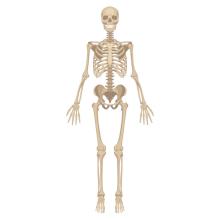
David Karasik: Therapeutic potential of carbon dots from Lycium barbarum in radiation-induced bone injury (Ann Transl Med . )
It would be a challenge to place this paper into one specific category; it encompasses a lot for one article, by providing a glimpse into a variety of topics, all interconnected but diverse. Even having a quite large supplemental material still requires from a reader—who might be a bioengineer or biochemistry major—to dig into the carbon dots (CDs) and RNA methylomics, and from a clinical scientist—to refresh their molecular knowledge (and insight into the herbal medicine!). We consider this to be a plus for any scientific publication to both enlighten the reader in the new findings as well as to make them wish to learn/read more. What is certain, this report is a must-read for a bone-centered biologist. Here we review this demanding article having mostly this type of audience in mind.
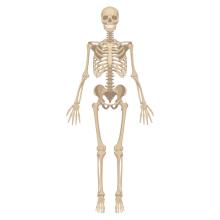
Naama Tova Cohen, Khalaf Kridin: A bidirectional autoimmune cluster between vitiligo and rheumatoid arthritis: a large-scale population-based study (Arch Dermatol Res . )
A knowledge gap exists regarding the association between vitiligo and rheumatoid arthritis (RA) due to the absence of large-scale cohort studies designed to investigate this association. To investigate the bidirectional epidemiological association between vitiligo and RA. A population-based study was conducted using Clalit Health Services (CHS) database (2002-2019) using both a cohort study and a case-control study design.
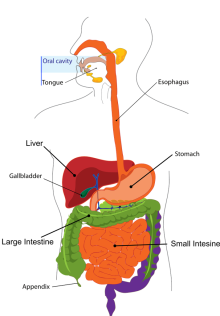
Hadar Nevo, Mohamad Hamoud, Wail Khuri, Shams-Eldin Mokari, Samih Zoabi, Nasser Sakran: Laparoscopic Conversion of Gastric Plication to One Anastomosis Gastric Bypass (Obes Surg . )
Laparoscopic gastric plication (LPG) is a restrictive procedure to reduce the size of the stomach by folding and suturing the stomach to decrease its capacity. LGP has a high revision rate, mostly to sleeve gastrectomy. To the best of our knowledge, this is the first such report on the bariatric population that has been never described before.The purpose of this video was to show the feasibility and safety, as well as the main technical aspects, of a laparoscopic conversion of gastric plication to One Anastomosis Gastric Bypass.
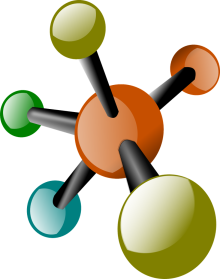
Tarek Taha: PD1 ligand functionality a biomarker of response to anti PD1 treatment in patients with HNSCC (NPJ Precis Oncol .)
Therapies targeting the PD-1/PD-L1 pathway have transformed head and neck squamous cell carcinoma (HNSCC) treatment. However, predicting the response to anti-PD-1 therapy remains a clinical challenge. This study evaluated the functional binding of PD-1 ligands in 29 HNSCC patients and compared it to the standard PD-L1 Combined Positive Score (CPS). The assessment of PD-1 ligands' functionality advances the current ability to predict the response of HNSCC patients to anti-PD-1 therapy.
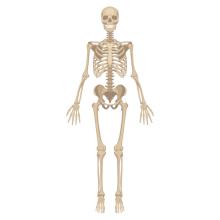
Mojahed Sakhnini: Hydraulic Polymethylmethacrylate Pressure Delivery System Versus Manual Balloon Tamp System in Balloon Kyphoplasty (Global Spine J . )
Osteoporotic vertebral compression fractures (VCFs) are prevalent among the elderly population, and Balloon kyphoplasty (BKP) is a minimally invasive solution for these. However, Polymethylmethacrylate (PMMA) leakage is a significant complication with potentially severe consequences. This study compares the safety and efficacy of manual balloon tamp system (MTS) and hydraulic Polymethylmethacrylate pressure delivery system (HPDS) in BKP.

Ory Wiesel: Foregut Surgery-80 is the New 60? (J Laparoendosc Adv Surg Tech A .)
Editorial
With the advancement in modern medicine and improved patient care, clinicians are required nowadays to assess more patients in their 80’s and 90’s. when these patients are being considered for surgery—current research emphasizes that physiological age is more important than chronologic age during patient assessment for surgery.

Khalaf Kridin: Pemphigoid gestationis is associated with an increased risk for adverse pregnancy outcomes: A large-scale, propensity-matched retrospective cohort study (J Am Acad Dermatol . )
Dear Editor,
Pemphigoid gestationis (PG) is a rare autoimmune blistering disease. It affects pregnant or postpartum women and presents with pruritus and blistering skin lesions. Adverse pregnancy outcomes (APOs) in PG patients pose a potential threat to mother and foetus. So far, data from small cohort studies suggested an increased risk for preterm labor and fetal growth restriction in PG patients1-5. Yet, the risk of APOs has, so far not been contrasted among PG- and non-PG pregnancies and data from large cohort studies exploring these and other APOs are missing (Table S1). To address this clinically important knowledge gap we here aimed to determine the risk of APOs in PG patients and controls.

Elias Nasrallah, Hanna Farah: Incidence, Predictors, and Outcomes of Pseudomonas aeruginosa Associated Acute Appendicitis in Children (Isr Med Assoc J .)
Pseudomonas aeruginosa (PSA) is an infectious pathogen associated with acute appendicitis; however, it is not consistently addressed by empirical antibiotic therapy, despite potential complications. Objectives: To investigate the incidence, predictors, and outcomes of PSA-associated acute appendicitis in children.
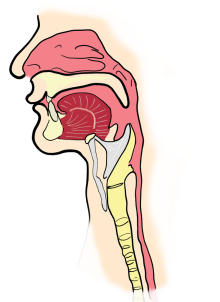
Amir Mari: Advances on Esophageal Measurements: High Resolution Manometry, Timed Barium Swallow, Endoflip and Ph Monitoring (Harefuah .)
Upper gastrointestinal (UGI) symptoms are very common in the general adult population. Dysphagia, heartburn, regurgitation and non-cardiac chest pain are the most common signs. The clinical approach in managing these symptoms starts with upper GI endoscopy in order to exclude inflammatory, neoplastic and fibrotic disorders that involve the esophagus. Upper GI endoscopy is mandatory especially when alarm signs exist. In patients with no structural abnormalities, physiological testing might aid to better understand the origin of the symptoms and to improve management.
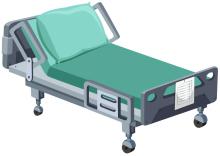
Helana Jeries, Fadi Hassan, Wasim Khoury, Badarny Samih, Mohammad E Naffaa: Anti-TNF-α drug-induced lupus presenting with cutaneous vasculitis and mononeuritis multiplex (Int J Rheum Dis .)
Tumor necrosis factor-alpha (TNF-α) antagonists represent a major breakthrough in the treatment of rheumatologic diseases. However, a variety of potentially serious adverse events have been reported related to their use, including (but not limited to) neurological manifestations. Mononeuritis multiplex is considered a severe neurological sequela that should be treated promptly to ensure the best clinical outcomes. Herein, we report a case of a patient with ankylosing spondylitis who developed mononeuritis multiplex 2 weeks after her first infusion of infliximab, along with a pronounced vasculitic skin rash and highly positive anti-nuclear and anti-double-stranded DNA antibodies.

Papaverine prior to catheter balloon insertion for labor induction: a randomized controlled trial (Am J Obstet Gynecol MFM )
Catheter-balloon insertion is a cervical ripening method of labor induction. Papaverine and its derivatives are musculotropic antispasmodic drugs that directly induce smooth muscle relaxation. Used during childbirth, these drugs have been suggested to shorten the duration of labor. We aimed to evaluate the effect of administering papaverine prior to catheter-balloon insertion on changes in Bishop-scores and on the induction-to-delivery interval.
(Raneen Abu Shqara, Yara Nakhleh Francis, Gabriela Goldinfeld, Yousef Haddad, Inshirah Sgayer, Miri Lavinsky, Lior Lowenstein, Maya Frank Wolf)
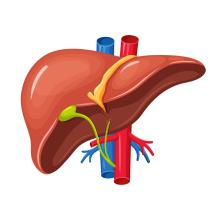
Gal Reches, Ron Piran: Par2-mediated responses in inflammation and regeneration: choosing between repair and damage (Inflamm Regen . )
The protease activated receptor 2 (Par2) plays a pivotal role in various damage models, influencing injury, proliferation, inflammation, and regeneration. Despite extensive studies, its binary roles- EITHER aggravating injury or promoting recovery-make a conclusive translational decision on its modulation strategy elusive. Analyzing two liver regeneration models, autoimmune hepatitis and direct hepatic damage, we discovered Par2's outcome depends on the injury's nature.

Ethnic disparities in complete and partial molar pregnancy incidence: a retrospective analysis of arab and jewish women in single medical center (BMC Public Health )
Molar pregnancies, encompassing complete and partial moles, represent a rare and enigmatic gestational disorder with potential ethnic variations in incidence. This study aimed to investigate relations of ethnicity with risks of complete and partial molar pregnancies within an Israeli population while accounting for age differences.
(Ala Aiob, Dina Gumin, Inna Zilberfarb, Karina Naskovica, Inshirah Sgayer, Susana Mustafa Mikhail, Avishalom Sharon, Lior Lowenstein)

Uri Yatzkar: Child-parent agreement on the SDQ: The role of child-parent attachment and parental feelings (J Clin Psychol . )
Children and their parents often provide divergent reports regarding their mental health on the Strengths and Difficulties Questionnaire (SDQ). These discrepancies may impede the diagnostic processes. The present study aimed to explore how a child's attachment to the parent and parental feelings may explain some of the variability between parent's and children's reports on the SDQ.
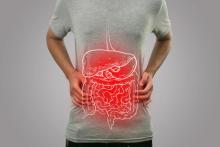
Aysar Nashef, Imad Abu-Elnaaj: Studying the Effect of the Host Genetic Background of Juvenile Polyposis Development Using Collaborative Cross and Smad4 Knock-Out Mouse Models (Int J Mol Sci .)
Juvenile polyposis syndrome (JPS) is a rare autosomal dominant disorder characterized by multiple juvenile polyps in the gastrointestinal tract, often associated with mutations in genes such as Smad4 and BMPR1A. This study explores the impact of Smad4 knock-out on the development of intestinal polyps using collaborative cross (CC) mice, a genetically diverse model.



